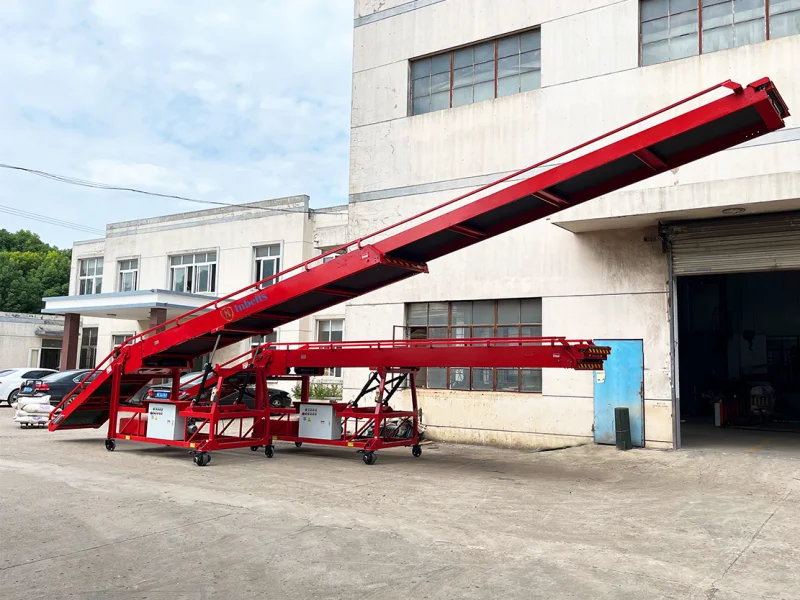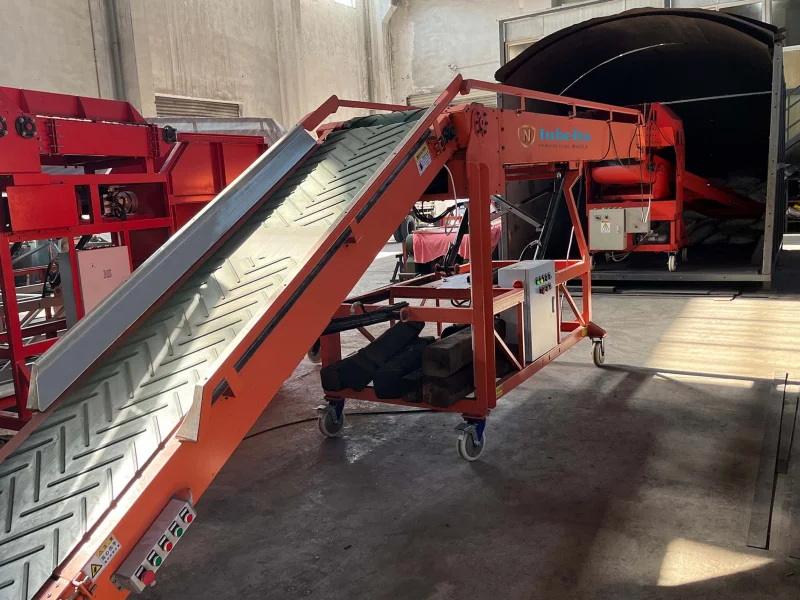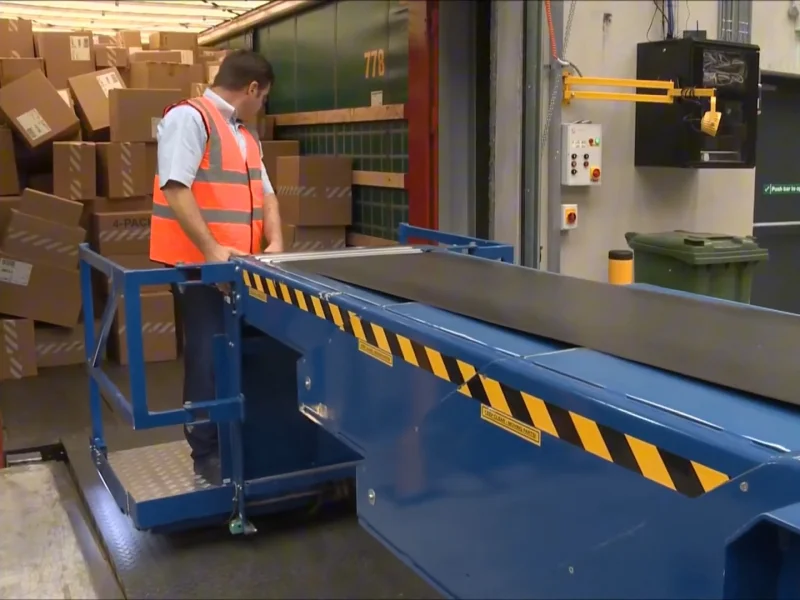
Telescopic Conveyor for Container Loading
Telescopic conveyors are a game-changer in logistics, making container loading faster, safer, and more efficient. In this comprehensive guide, we'll explore everything you need to know about telescopic conveyors, from their features and benefits to types, maintenance, and future trends.
What is a Telescopic Conveyor?
A telescopic conveyor is an extendable conveyor system designed for efficient loading and unloading of cargo, especially in shipping containers, trailers, and warehouse docks. These conveyors help streamline operations by reducing the need for manual labor while improving speed and safety.
Importance
Telescopic conveyors have become essential in industries like e-commerce, warehousing, and manufacturing. By extending deep into a container, they eliminate the need for workers to carry loads manually, reducing fatigue and increasing throughput.
Working Principle
Step 1: Positioning and Activation
- The operator aligns the telescopic belt conveyor with the container or truck.
- The conveyor system is activated, and the belt starts moving.
Step 2: Extension into the Container
- The telescopic sections extend into the container as needed.
- The operator can adjust the length and height for optimal positioning.
- Some models include powered rollers for easier movement of packages.
Step 3: Material Loading/Unloading
- For Loading: Goods or parcels are placed on the conveyor at the input end. The moving belt transports them into the container, ensuring uniform stacking.
- For Unloading: Goods inside the container are placed on the conveyor belt, which brings them out efficiently.
Step 4: Retraction and Storage
- Once tuck loading unloading is complete, the conveyor retracts automatically or manually.
- It is stored in a compact position, ready for the next operation.

Telescopic conveyor for bags, cartons.
Key Features of a Telescopic Conveyor
- Extendable Sections: Can extend deep into containers and retract when not in use.
- Height Adjustability: Lifting mechanisms adjust conveyor height for ergonomic loading.
- Smooth Belt Operation: Reduces damage to packages during transport.
- Auto-Reverse Function: Allows both loading and unloading operations.
- Safety Sensors & Emergency Stops: Prevent accidents and ensure worker safety.
- Energy-Efficient Motors: Reduce power consumption and operational costs.
Types of Telescopic Conveyors for Container Loading
Belt Telescopic Conveyors
- Most common type, featuring an extendable belt conveyor for package handling.
- Ideal for logistics, courier services, and e-commerce warehouses.
Roller Telescopic Conveyors
- Uses motorized or gravity or powered rollers instead of belts.
- The flexible roller conveyors are best for handling heavy items such as industrial equipment and palletized goods.
- Our roller conveyors including gravity roller conveyor and powered roller conveyor system.
Gravity Telescopic Conveyors
- Extendable, non-motorized conveyors that rely on gravity for material movement.
- Cost-effective but requires manual assistance for loading.

Telescopic conveyor for packages.
Benefits of Using Telescopic Conveyors for Container Loading
- Increased Efficiency: Reduces loading time by up to 50% compared to manual methods.
- Lower Labor Costs: Fewer workers are needed for container loading/unloading
- Ergonomic Design: Reduces strain and injuries for workers handling heavy loads.
- Space-Saving: Retractable design minimizes storage footprint when not in use.
- Cost Savings: Less reliance on forklifts and manual labor reduces operational expenses.
Industries That Use Telescopic Conveyors
- E-Commerce & Warehousing: Fast order processing.
- Automotive & Manufacturing: Safe handling of heavy goods.
- Food & Beverage: Hygienic transportation of products.
- Distribution Centers – Loading/unloading cartons, parcels, and bulk goods.
- Ports & Terminals – Facilitating cargo movement between containers and storage.
- Logistics & Freight Handling – Improving efficiency in loading delivery vehicles.
- Industrial Manufacturing – Moving raw materials and finished products for export.

Telescopic conveyor for cartons.
Comparison: Telescopic Conveyor vs. Traditional Loading Methods
| Feature | Telescopic Conveyor | Manual Loading | Forklifts | Non-Telescopic Conveyor |
| Efficiency | ✅ High | ❌ Low | ✅ Medium | ✅ Medium |
| Labor Requirement | ✅ Low | ❌ High | ❌ High | ✅ Medium |
| Loading Speed | ✅ Fast | ❌ Slow | ✅ Moderate | ✅ Moderate |
| Cost Savings | ✅ High | ❌ High | ❌ High | ✅ Moderate |
| Safety | ✅ Safe | ❌ High risk | ❌ Forklift-related hazards | ✅ Safe |
FAQs About Telescopic Conveyors for Container Loading
1. What is the maximum reach of a telescopic conveyor?
Typically up to 15-20 meters, depending on the model.
2. How does a telescopic conveyor improve efficiency?
By reducing loading time, minimizing manual labor, and increasing accuracy.
3. Can telescopic conveyors handle heavy loads?
Yes, they can handle up to several tons per hour.
4. Are these conveyors customizable for specific industries?
Yes, they can be tailored for different industries and applications.
5. What is the maintenance cost of a telescopic conveyor?
Costs vary based on usage, but regular servicing keeps expenses low.
6. How do I choose the right telescopic conveyor for my business?
Consider load capacity, available space, and budget.
Telescopic conveyors revolutionize container loading by improving efficiency, reducing labor costs, and enhancing workplace safety. They are an ideal solution for warehouses, logistics hubs, and industrial facilities looking to optimize their material handling processes.


Leave Me Your Requirement!